< Back
-
How to switch language on your Android device?
Android device provides multiple languages to satisfy users in the world. Please follow the steps below to switch language on Android device (take SAMSUNG for example):
1. Go to Settings on your Android device > My device > Language and input.
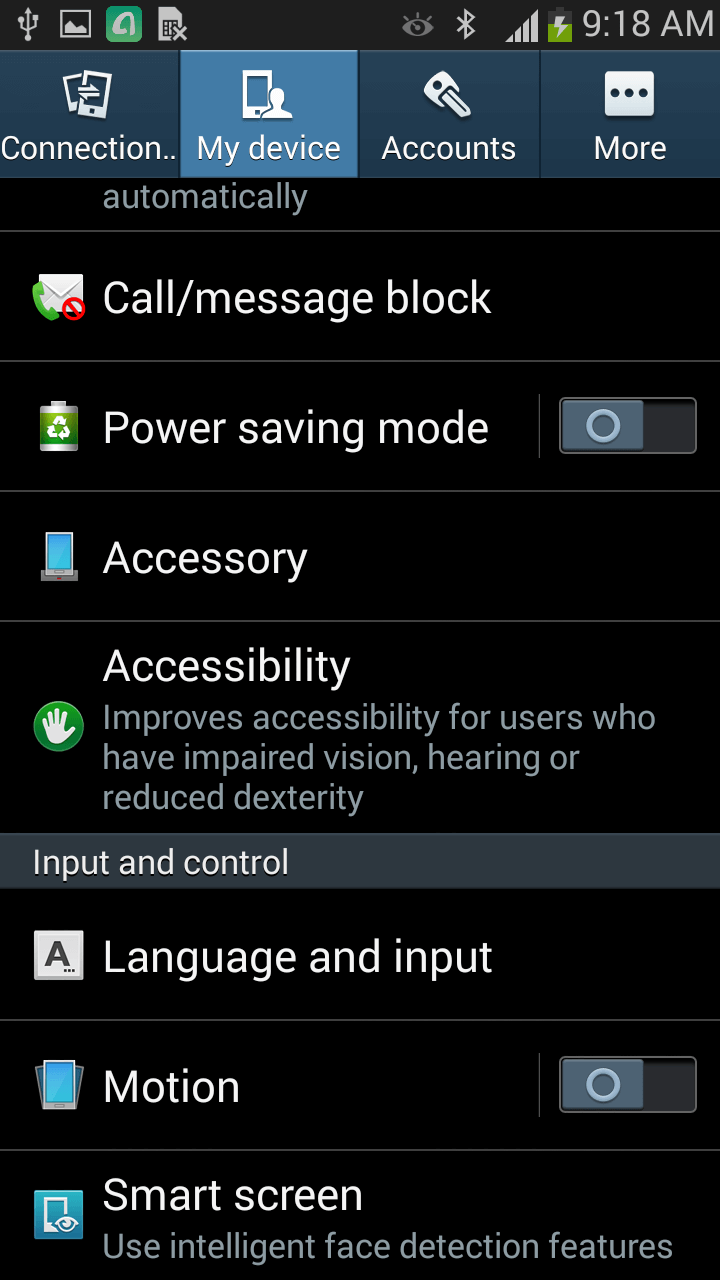
2. Tap Language and select your preferred language.
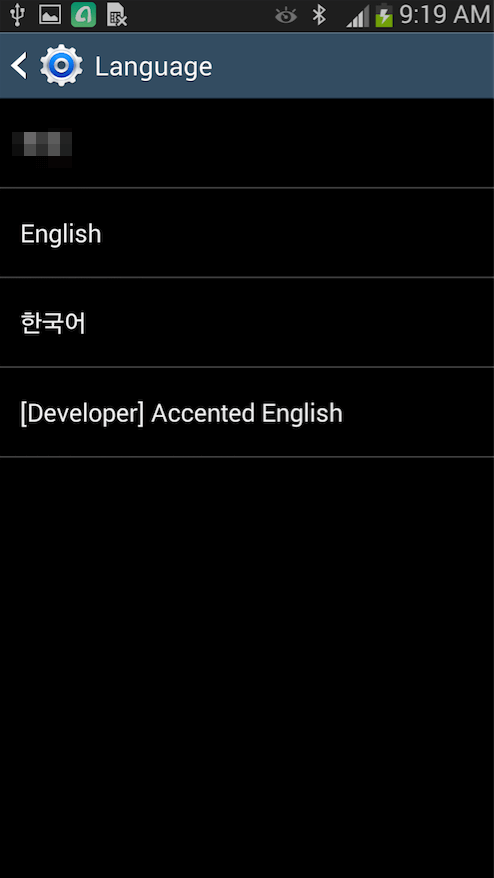
How to change wallpaper on Android device?
You can set the wallpaper on your Android device by using the default wallpapers or by choosing an image from your gallery. Please refer to the steps below to change wallpaper on Android device. Here we take SAMSUNG for example:
1. Tap and hold on the Home screen or go to the Settings - Wallpaper.

2. Tap the Wallpapers icon in the bottom left corner.
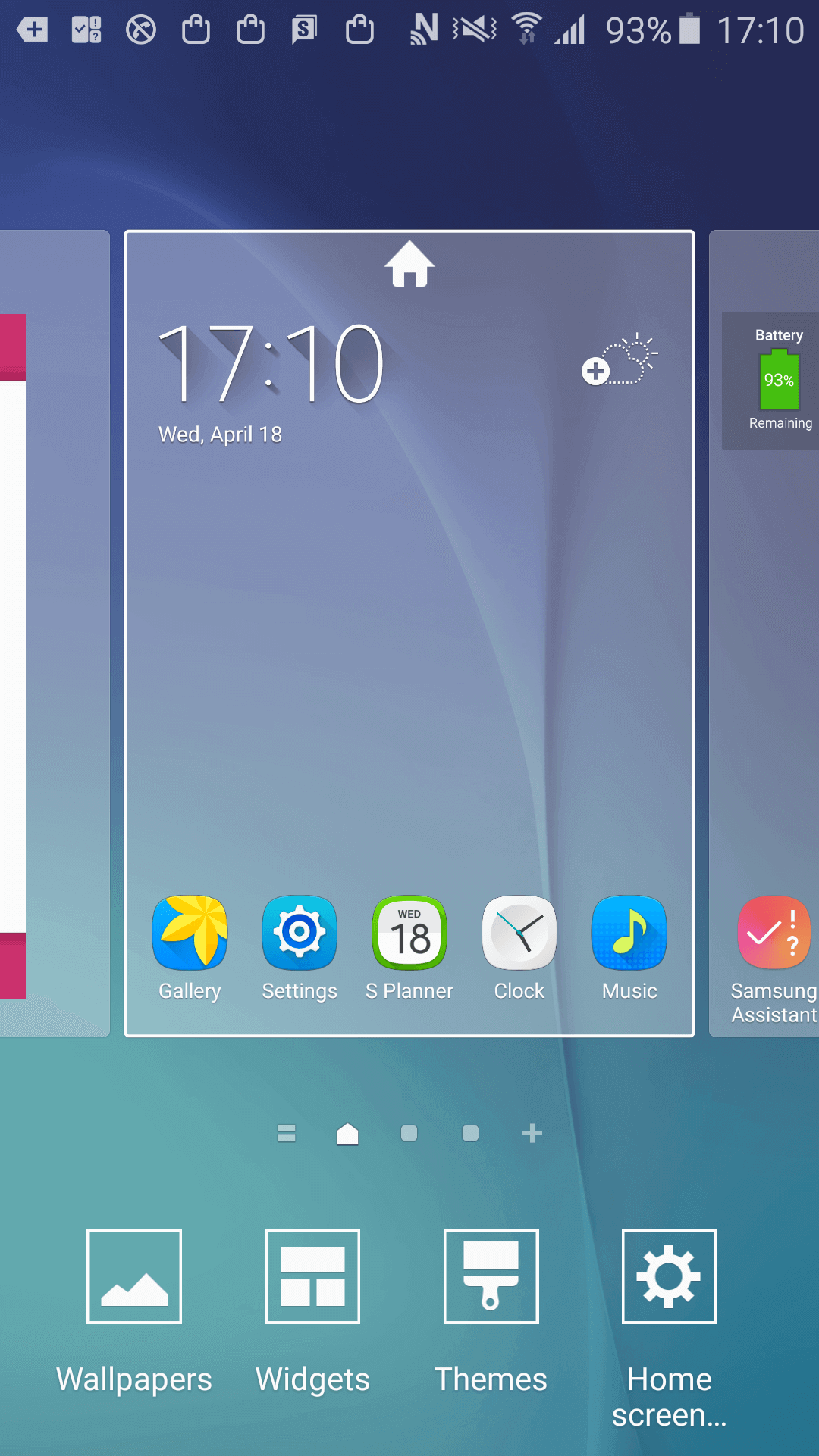
3. Choose Home screen, Lock screen, or Home and Lock screen in the upper left corner.
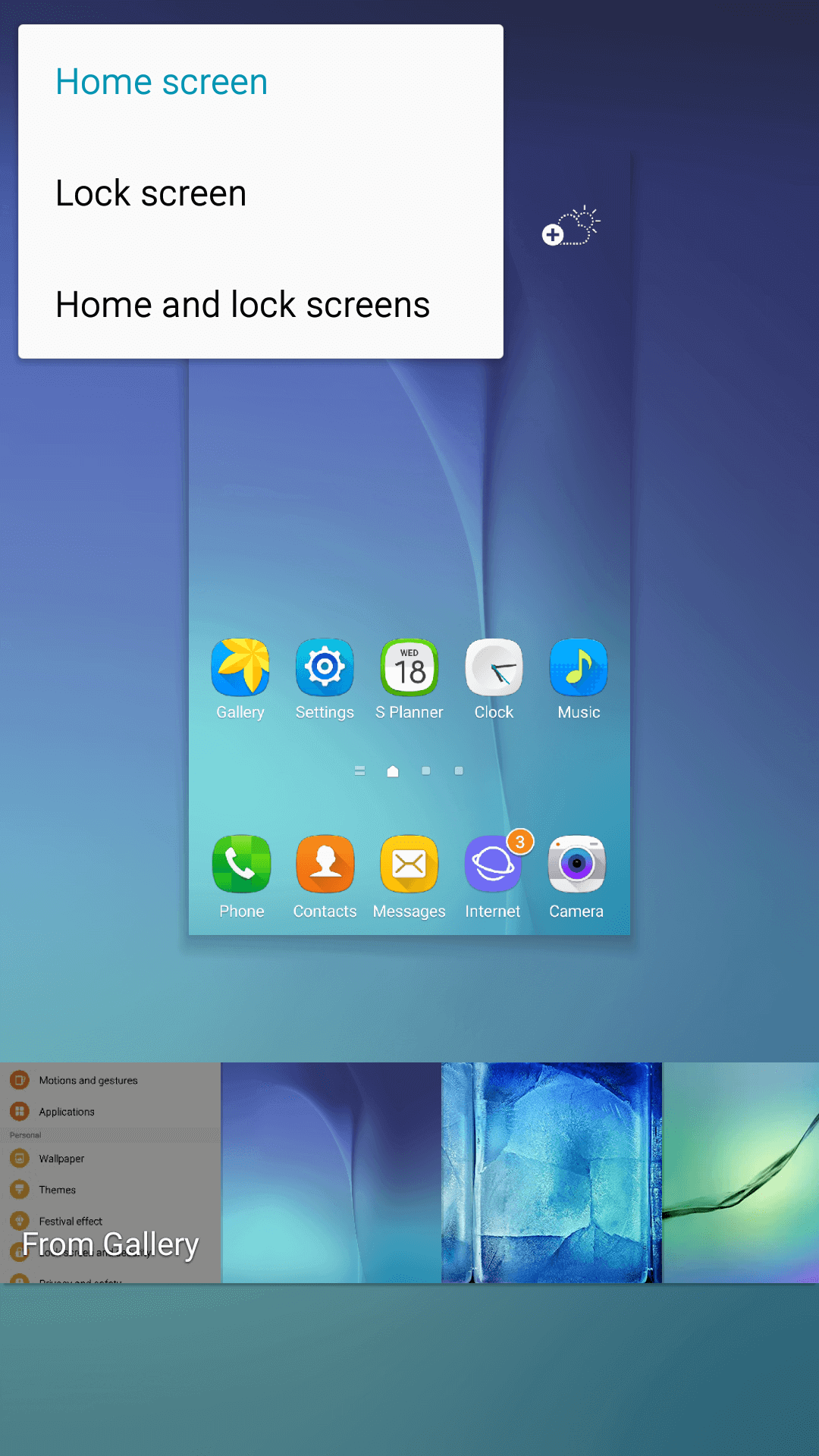
4. Tap a SAMSUNG default wallpaper or choose a photo from your gallery at the bottom of screen.
5. Tap SET AS WALLPAPER on the bottom of your screen.
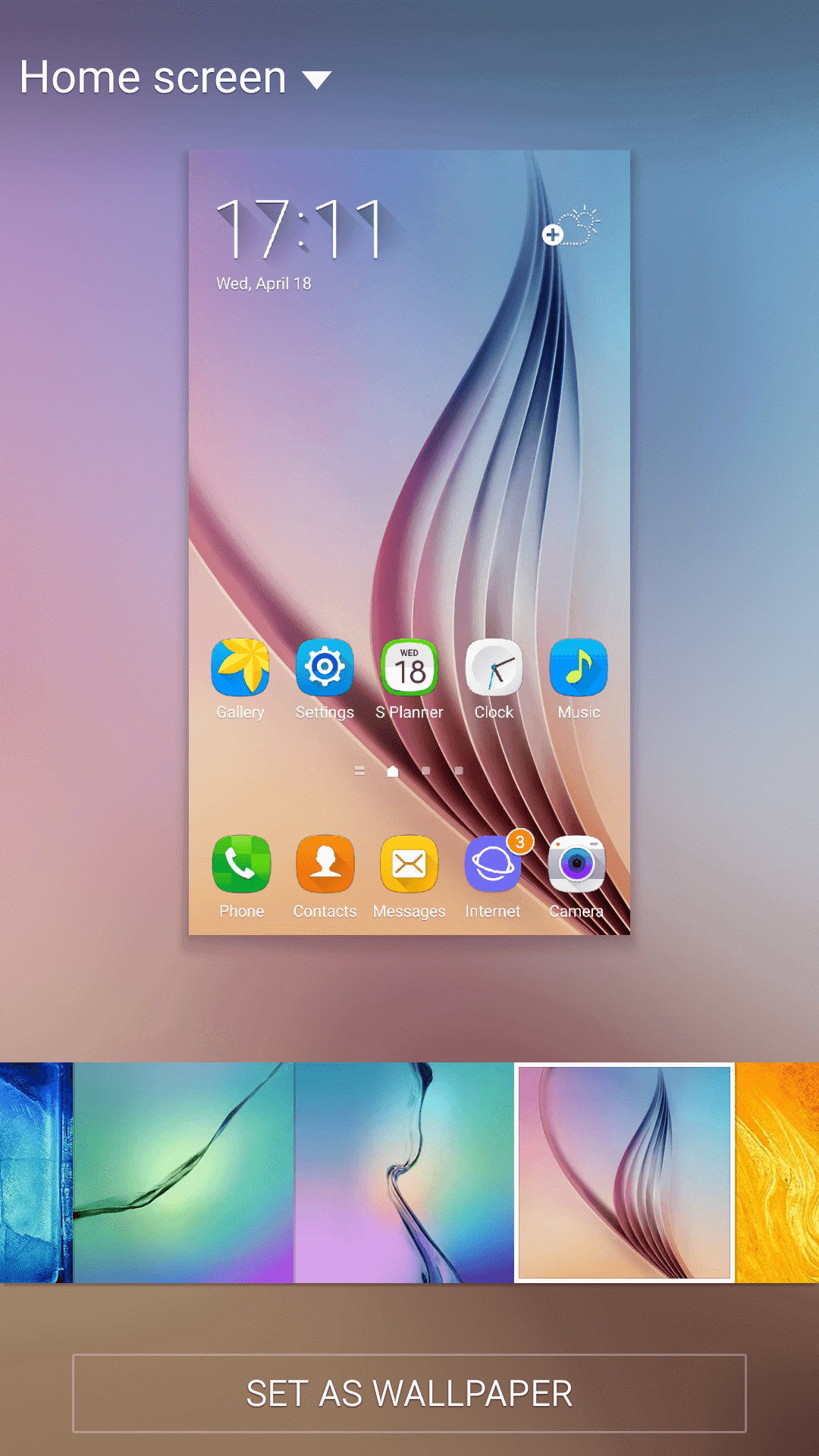
How to adjust the brightness in android device?
How to adjust the brightness in android device? Please refer to the detailed instructions to tackle this issue. Here we take HUAWEI for example.
Please go to the Settings of home screen > Tap Display > Drag the slider to the right or left to adjust the brightness.
If your android device has an ambient-light sensor, you’ll see an Automatic option besides the slider. Turning on Automatic can adjust brightness based on your surroundings automatically.

How to modify device name on Android device?
If you want to modify or change device name on Android device, this article will provide detailed instructions with you. Here we take SAMSUNG for example:
Open Samsung > Go to Settings > Scroll down the screen > Tap About device > Tap Device name > Input the new name and tap Done.
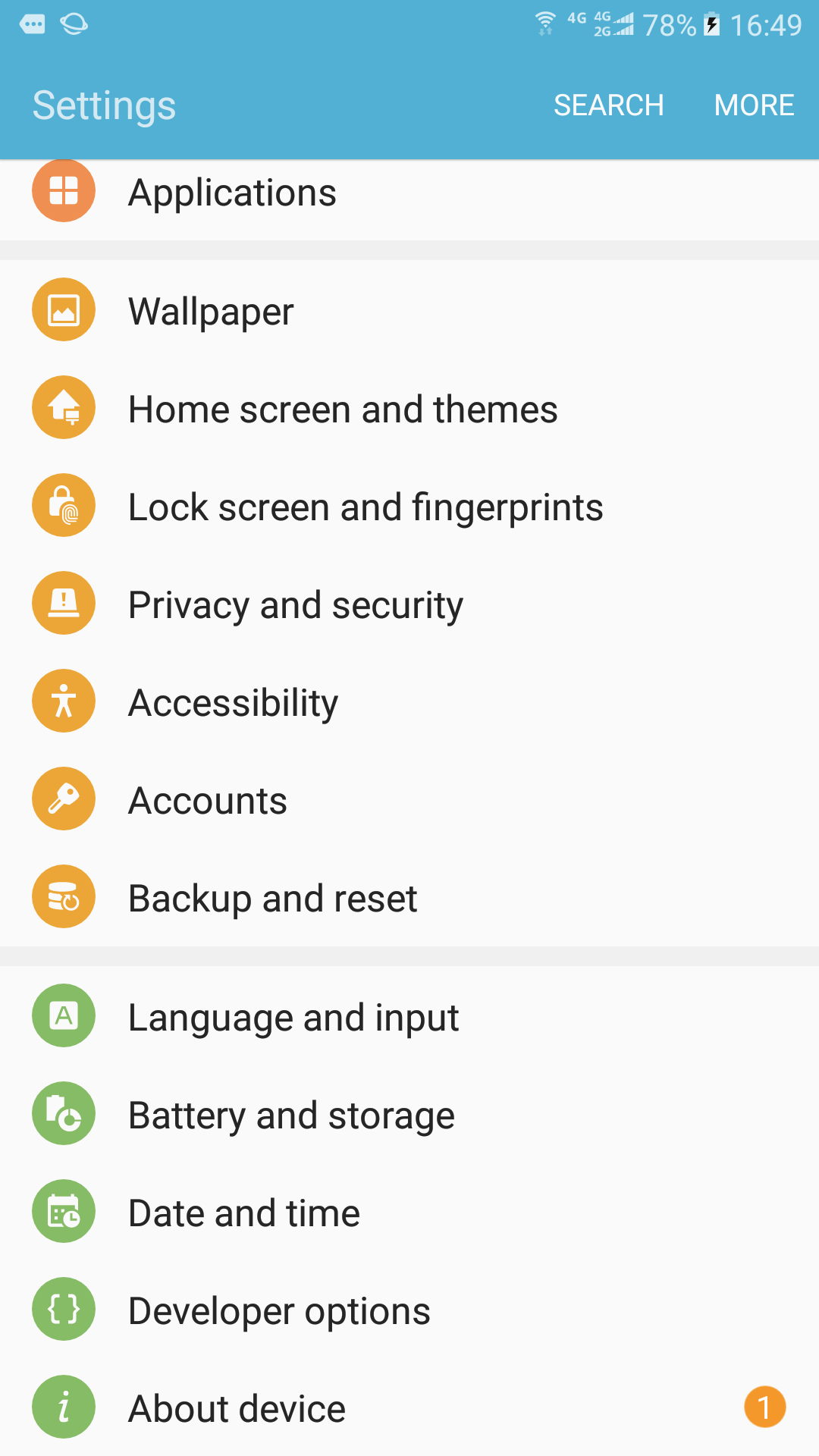
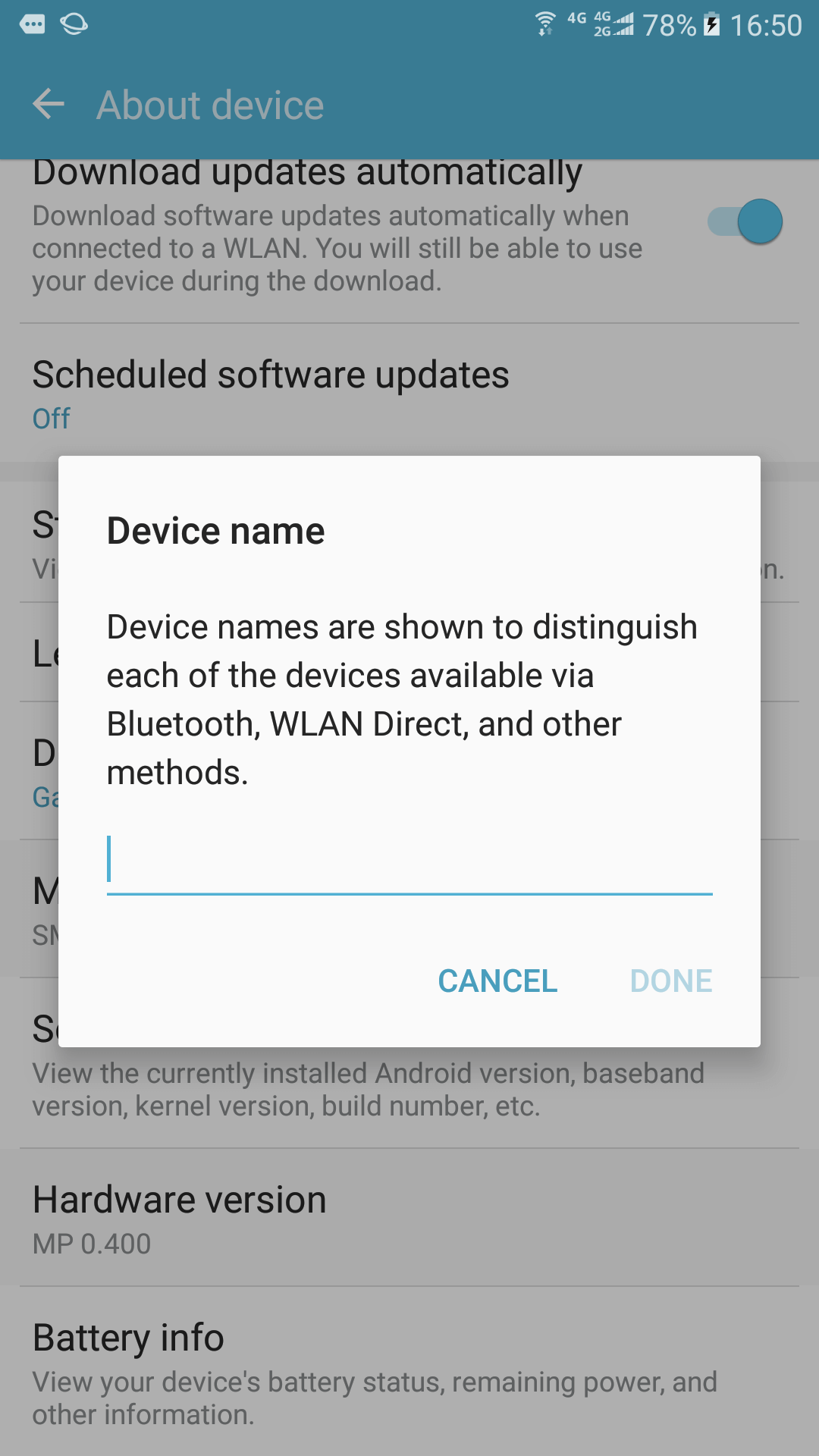
How to change wallpaper on Android device?
You can set the wallpaper on your Android device by using the default wallpapers or by choosing an image from your gallery. Please refer to the steps below to change wallpaper on Android device. Here we take SAMSUNG for example:
1. Tap and hold on the Home screen or go to the Settings - Wallpaper.

2. Tap the Wallpapers icon in the bottom left corner.

3. Choose Home screen, Lock screen, or Home and Lock screen in the upper left corner.

4. Tap a SAMSUNG default wallpaper or choose a photo from your gallery at the bottom of screen.
5. Tap SET AS WALLPAPER on the bottom of your screen.

How to reset your Android device to factory settings?
If your Android device is running slow by overloaded apps or doesn’t work by recent upgrade, you may choose to reset your Android device to factory settings to solve this issue. So we prepare the following article for you (take SONY for example):
Before we get started, please note that a factory reset will erase all the data on your Android device. Please make a backup of your Android device firstly.
1. Go to Settings on your device > Scroll down the screen > Click Backup & reset.
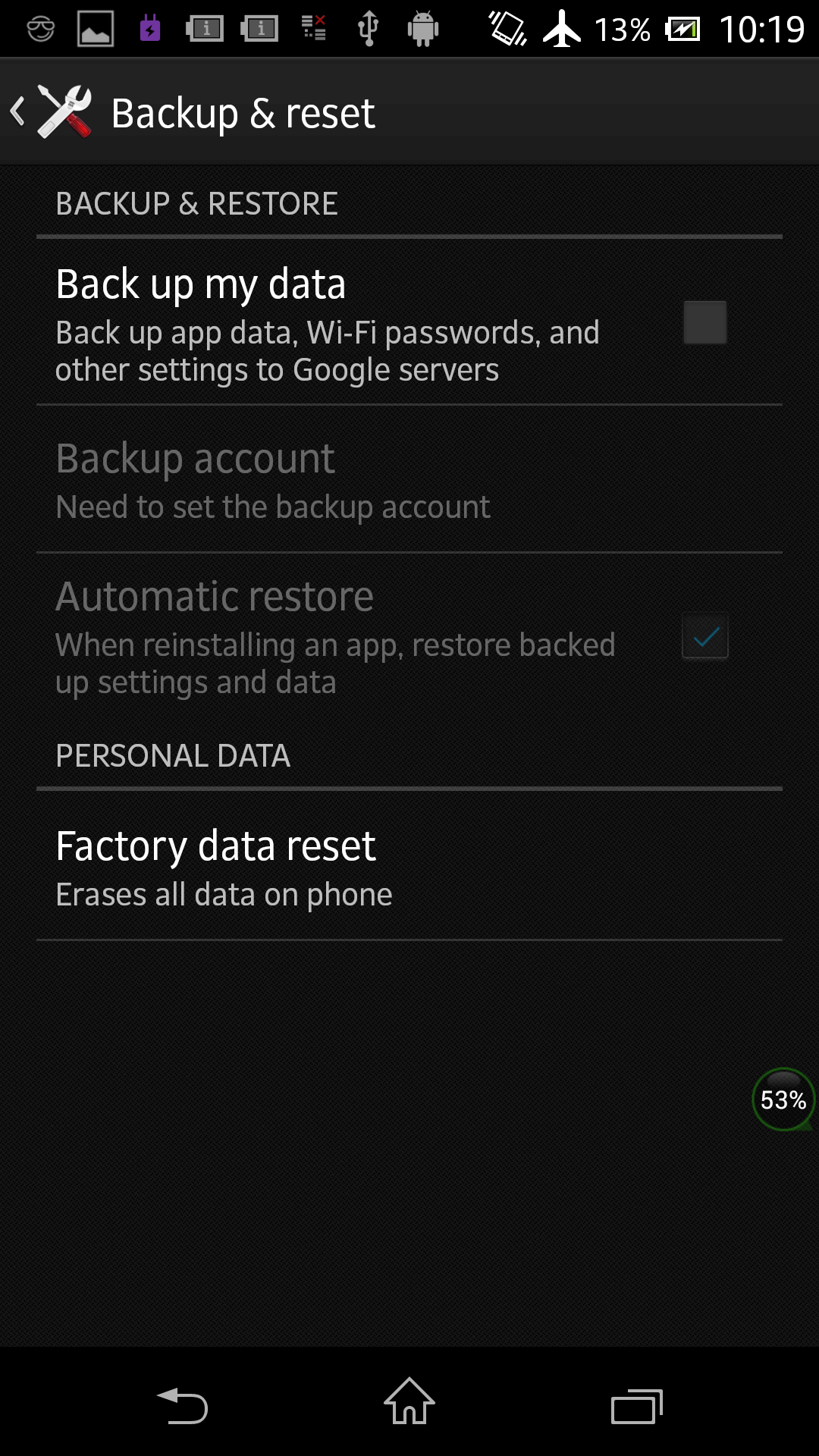
2. Click Factory data reset > Click Reset phone.
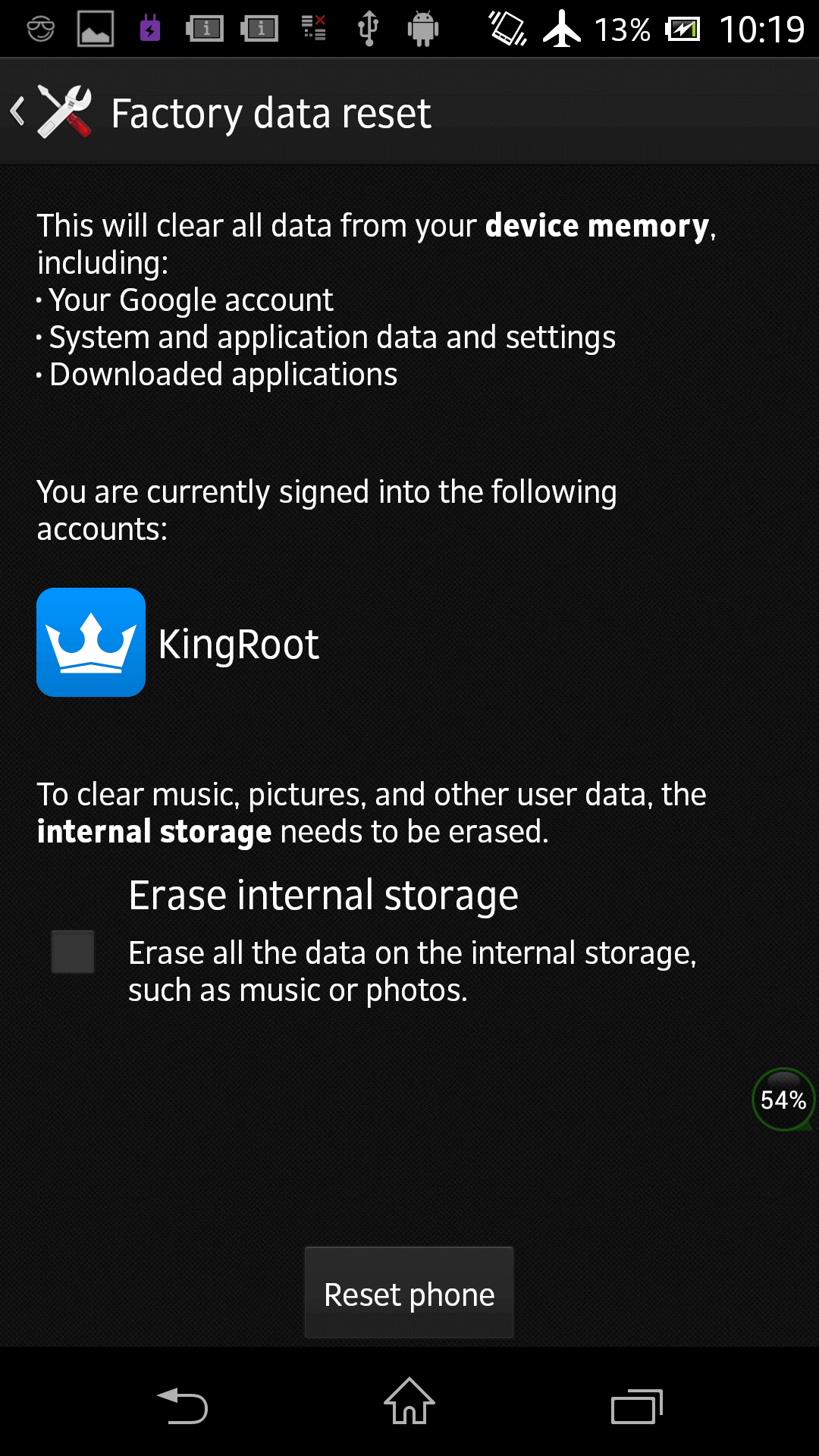
-
How to enable Developer options on Android device?
The developer options will not display if you just get a new phone or you clear your device data. Please follow the detailed instructions below to launch Developer options on Android device (take SAMSUNG for an example):
1. Open SAMSUNG > Go Settings > Click “About device” option > Click “Software info” option.
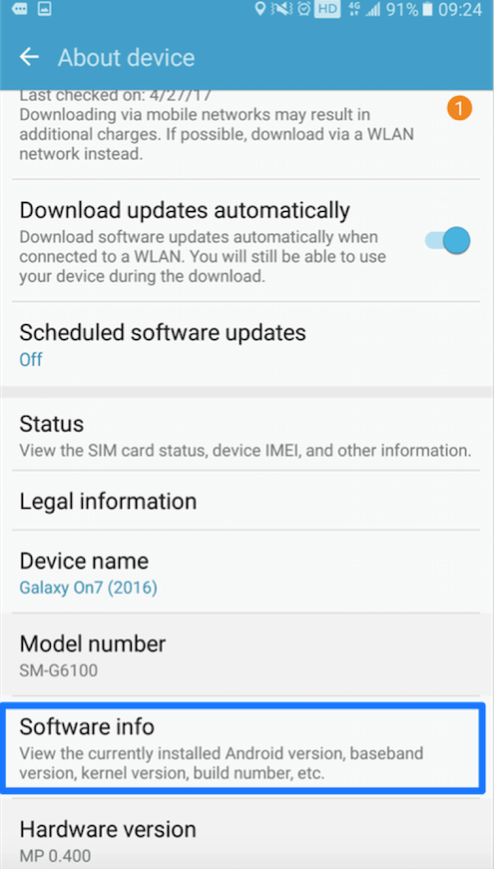
2. Click “Build number” several times, you will get the message “Developer mode has been turned on” on the interface of mobile. Then, you will see the “Developer options” after returning Settings.
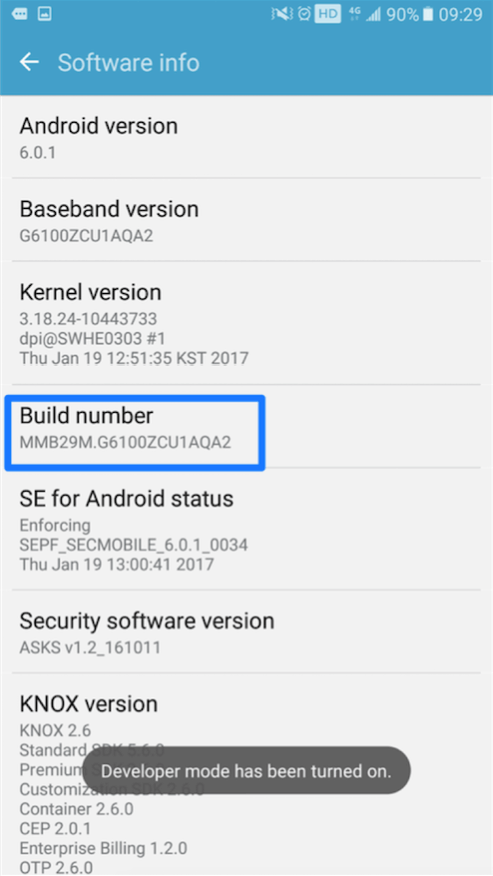
How to turn on USB debugging option on Android device (Android 5.0 and above)?
To let computer detect your Android device, you need to turn on USB debugging option. Please refer to the following instructions to turn on USB debugging option on Android device (take SAMSUNG for an example)
1. Open SAMSUNG > Go Settings > Click Developer options.
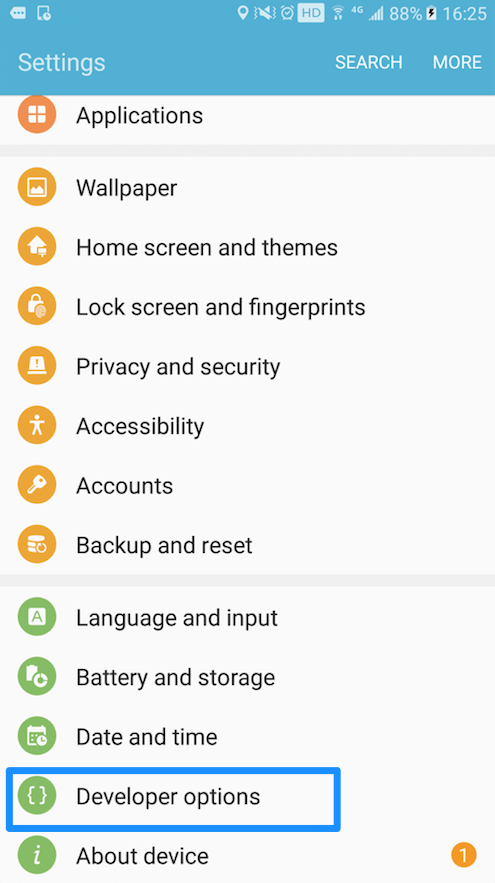
2. You will get the messages below on the interface of mobile when you choose to turn on USB debugging option. Then please click “OK” to allow USB debugging.
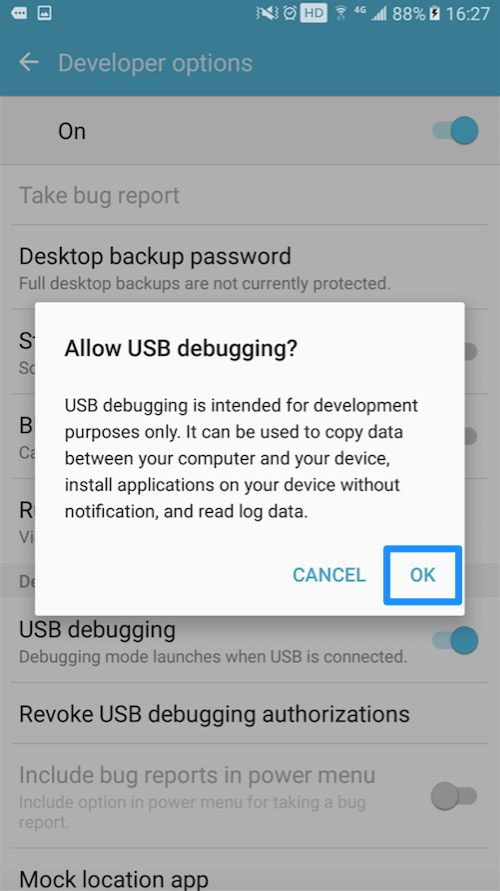
How to open USB debugging option (Android 4.0) on Android device?
If you want to transfer data between device and computer, you need to turn on USB debugging option. Please refer to the detailed instructions below to turn on USB debugging option (Android 4.0) on Android device (take Samsung for an example).
1. Open Samsung > Go Settings > Click Developer options.
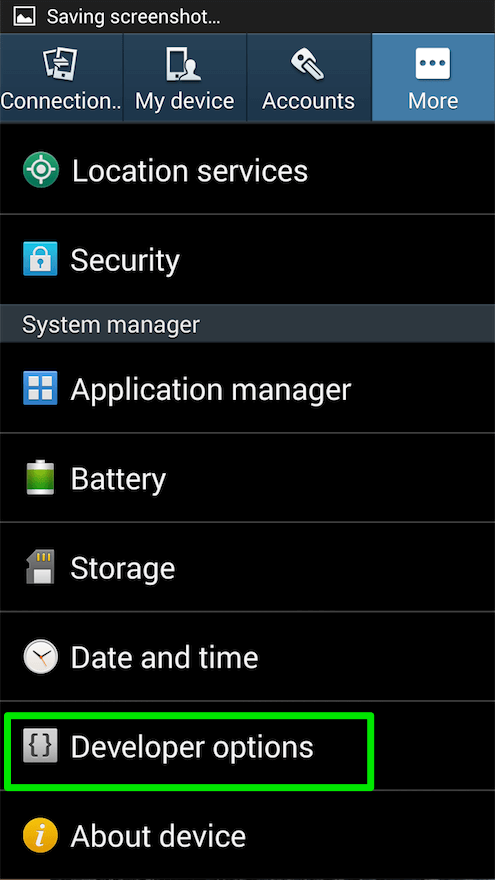
2. The messages below on the interface of mobile will pop up when you click to turn on USB debugging button. Then please click “OK” to allow USB debugging.
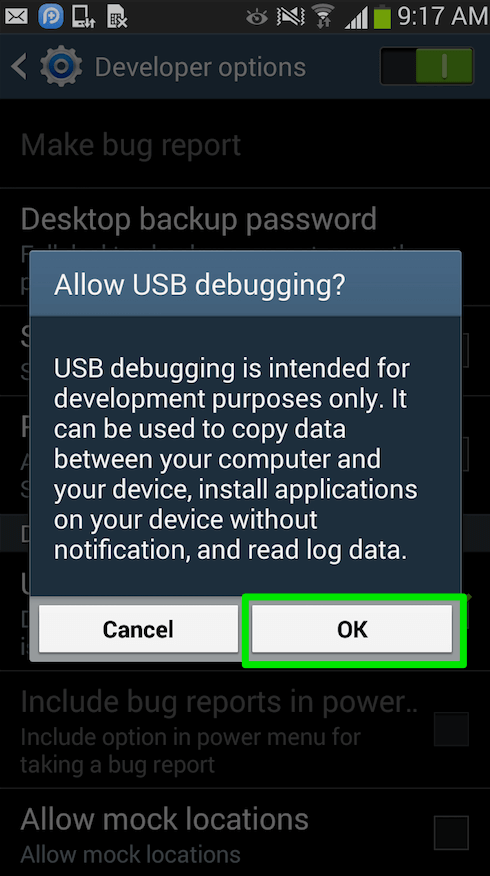
How to turn on Install via USB option on Android device?
You cannot install The Third Party Software APK on your phone or pad if you turn off Install via USB option on Android device (take Xiaomi for an example). To solve this issue, please refer to the detailed instructions below:
1. Go Settings > Additional settings > Developer options.
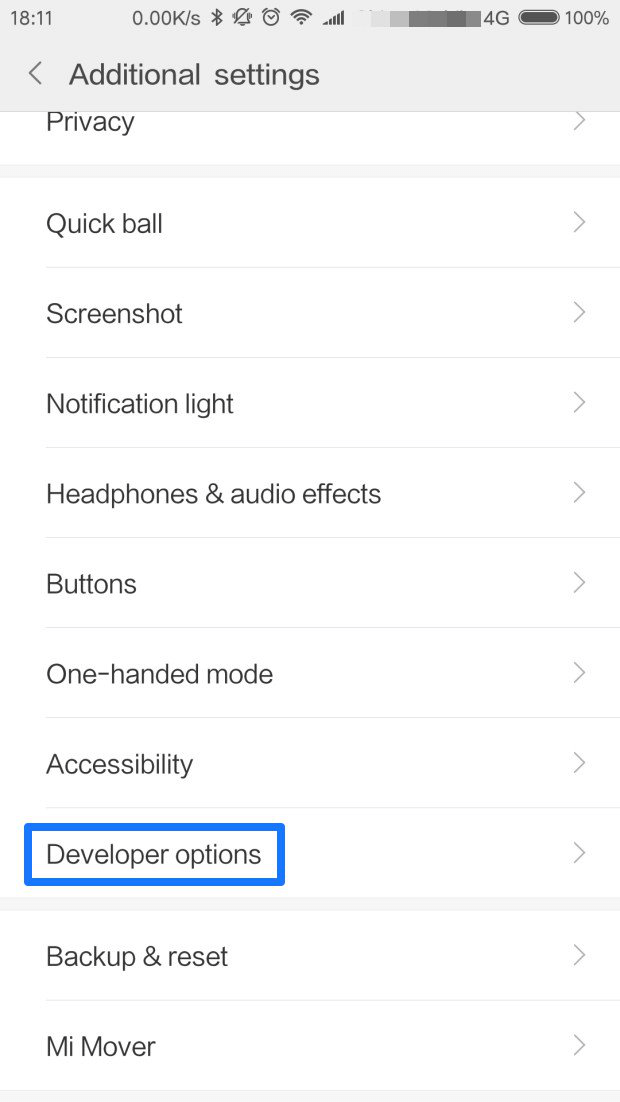
2. Please turn on Install via USB option.
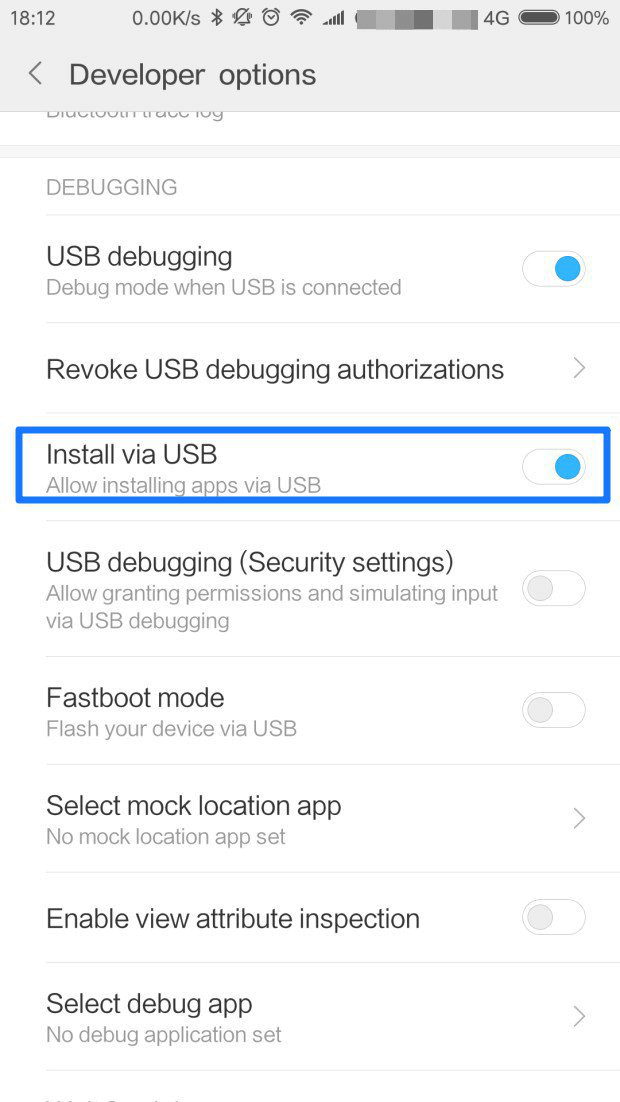
How to Connect Android Device to the Internet?
Many users may face Internet issue on Android device. There are two ways of connecting Android device to Internet. Please follow the steps below to access Internet on Android device (take SAMSUNG for example):
The one way is to choose Mobile data network to access Internet.
1. Go to Settings > Tap More connection settings.
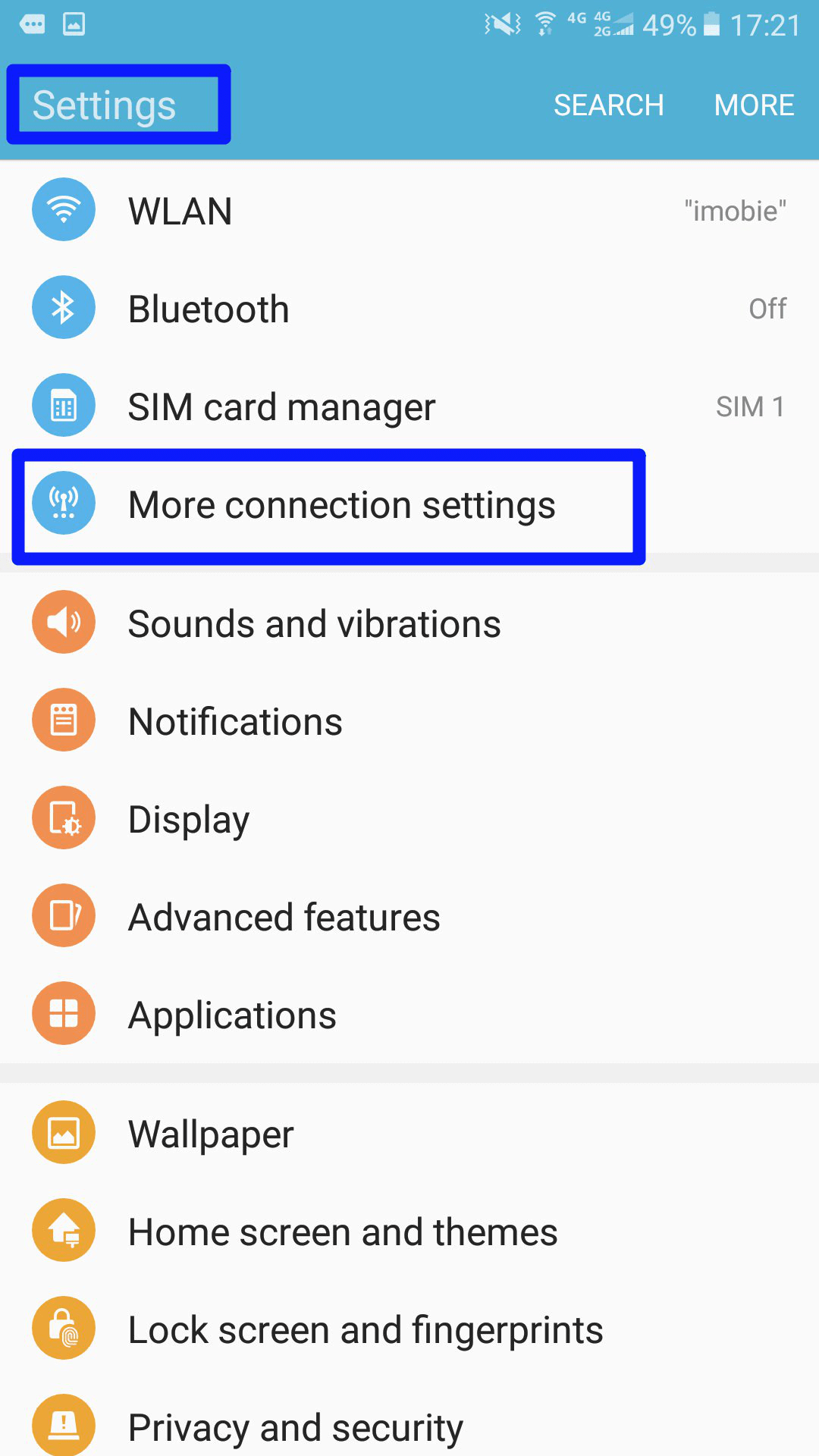
2. Tap Data usage > Turn on Mobile data.
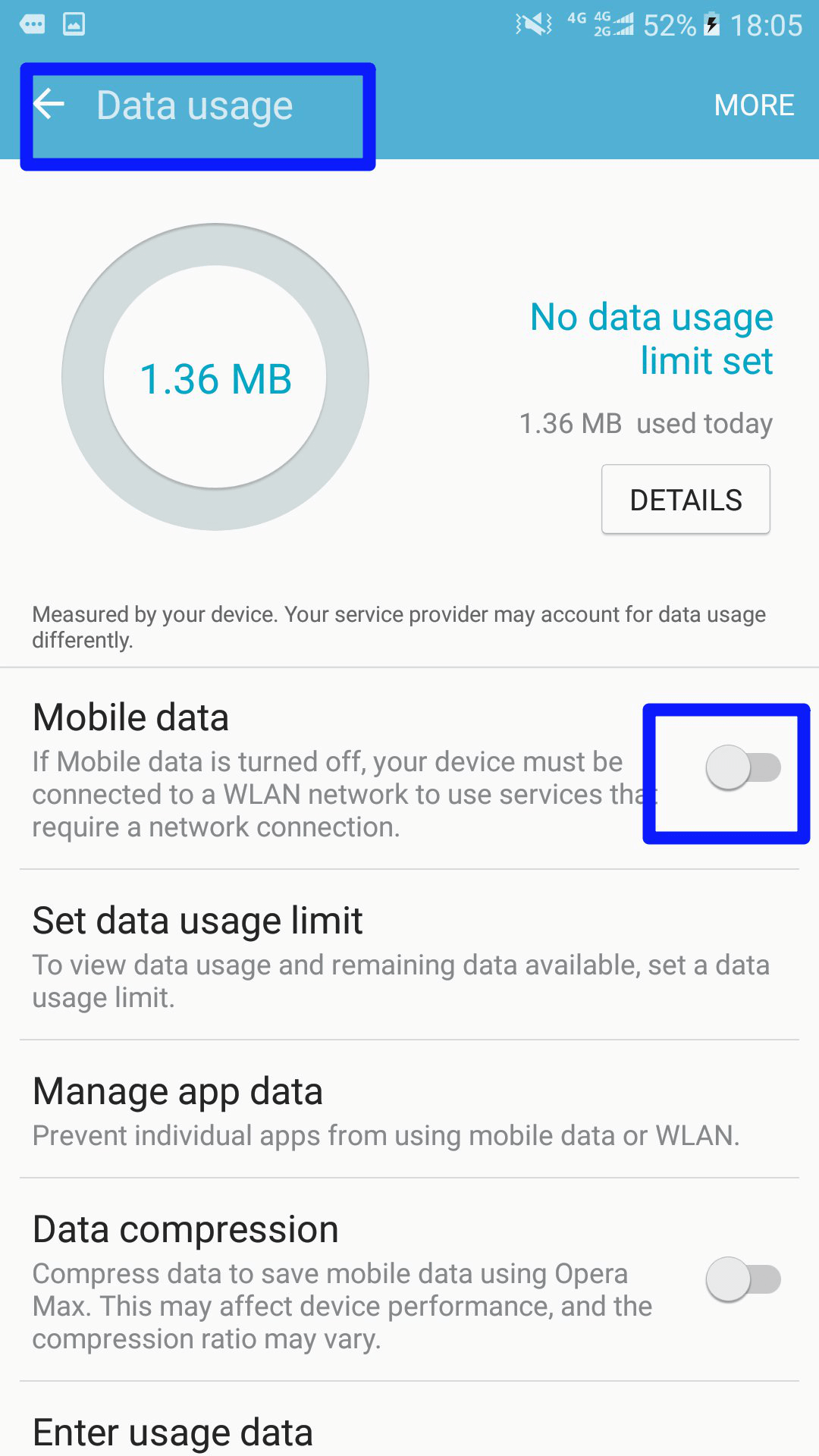
The other way is to connect Wi-Fi network to get Internet.
1. Please go to Settings > Tap WLAN.
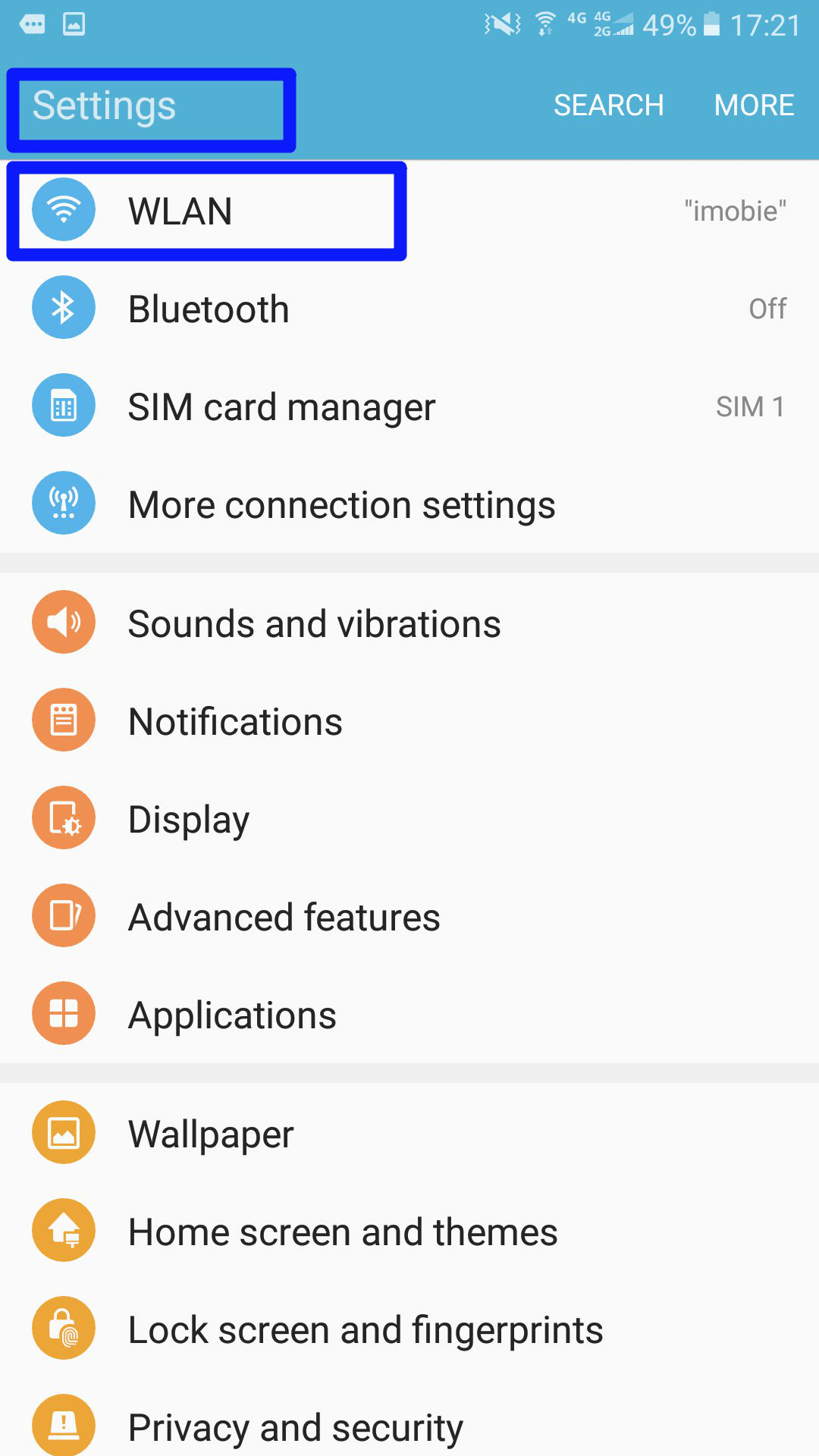
2. Turn WLAN on > Choose Wi-Fi network from the list > Enter the password and tap CONNECT.
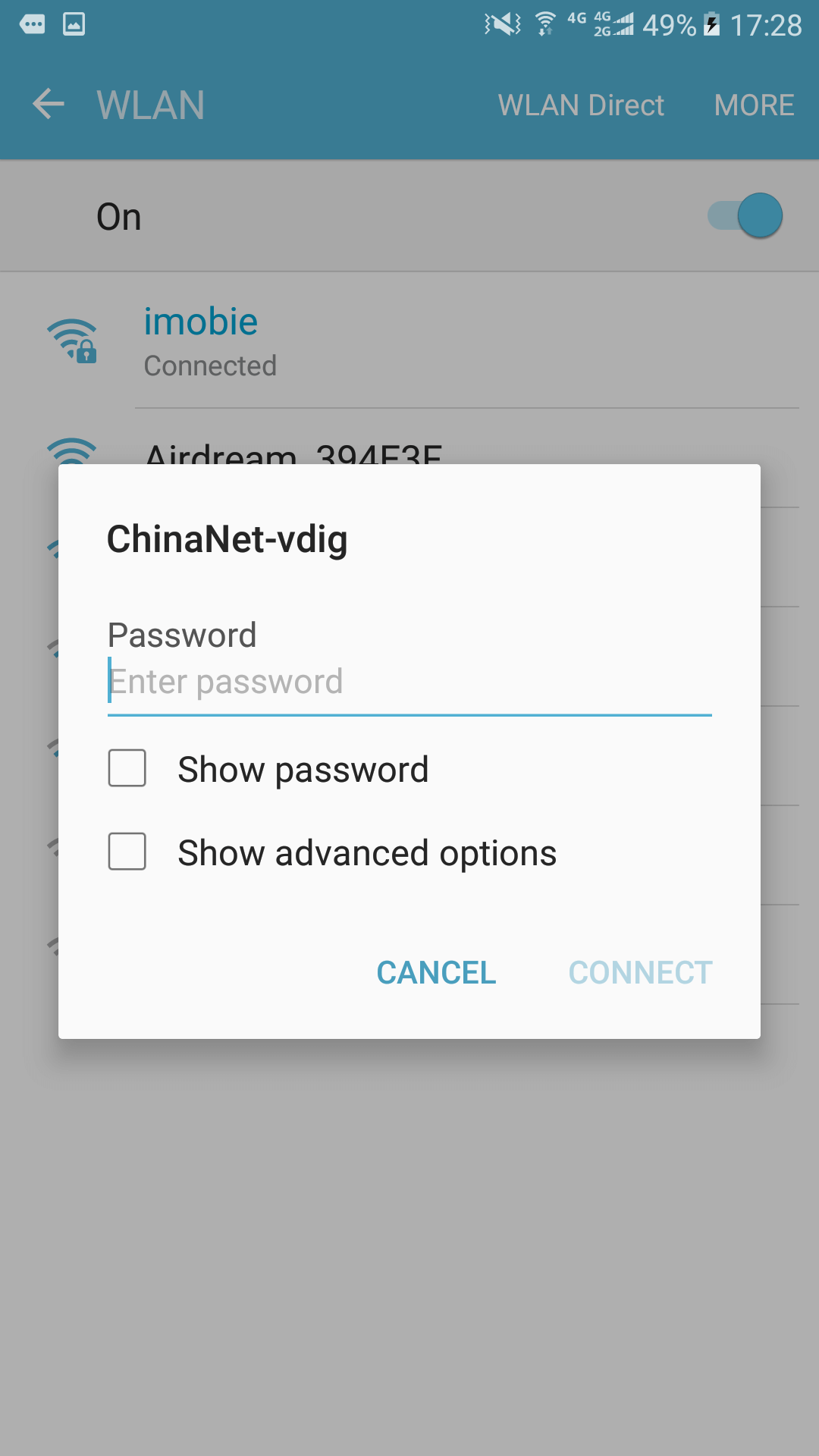
How to enable security threat scans on your android device?
Part 17. How to enable security threat scans on your android device?
If you install an unsafe app by accident, your device data may be at risk. To protect the data on your device, we recommend you to enable security threat scans on your device. These scans are performed by Google and verified as safe to install.
How to enable the scans on your android device? Please kindly refer to the steps to try. Here we take HUAWEI for example.
Go to Settings > Tap Google > Tap Security > Tap Google Play Protect > Turn on Scan device for security threats.
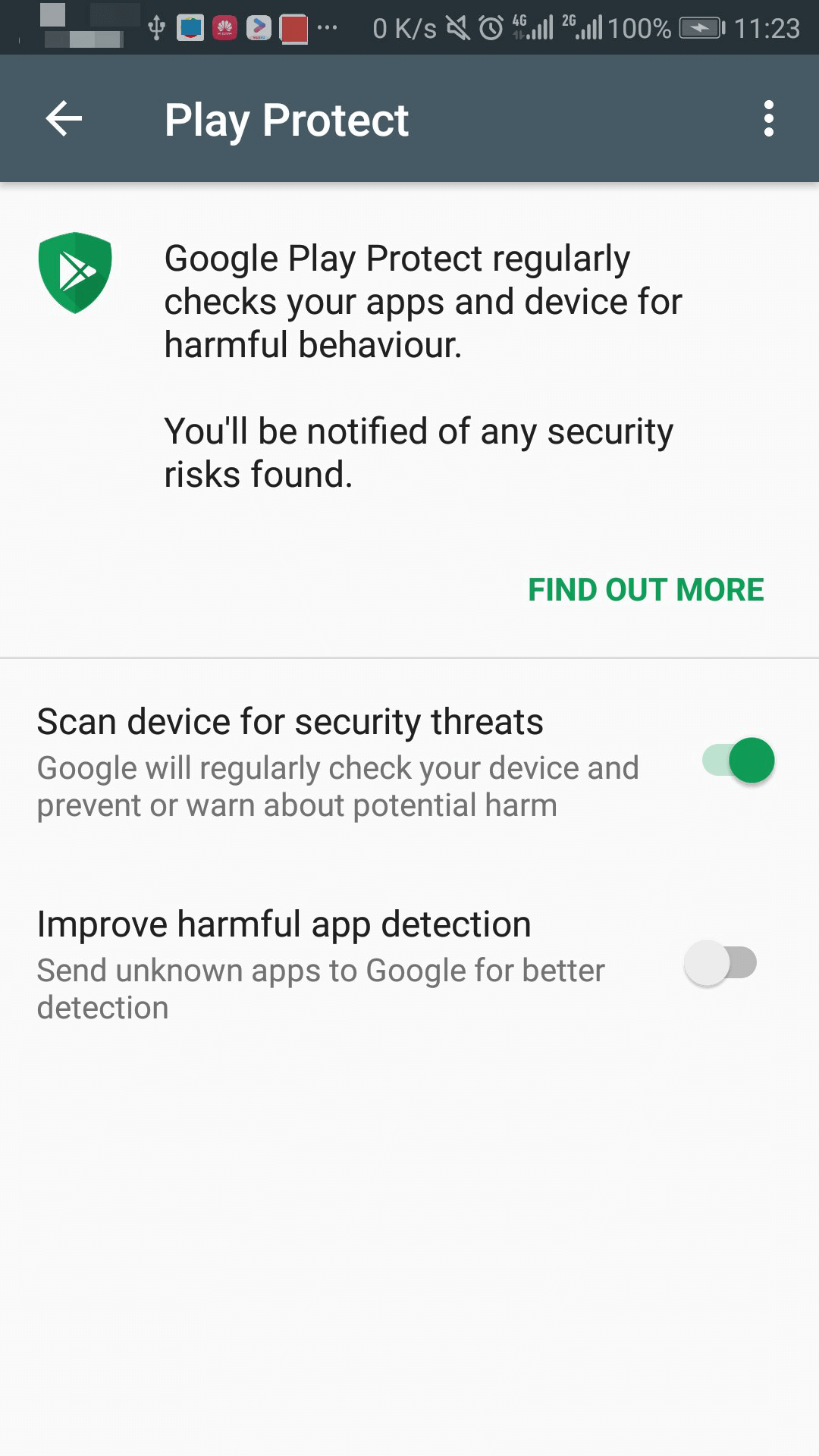
How to turn off USB debugging option on Android device?
If you don’t want the computer to detect the contents of your Android device, turning off USB debugging option is a good idea. Please refer to the steps below to turn off USB debugging option on your Android device.
Go to Settings > Developer options > Turn off USB debugging.
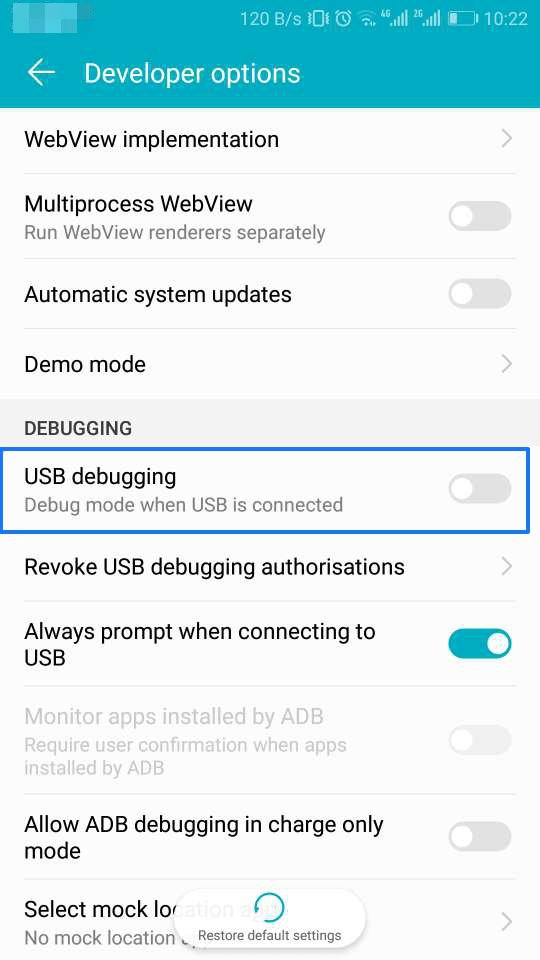
How to set ringtone on your Android device?
Many people may have in trouble in setting ringtone on Android device. Please follow the steps below to set ringtone as you like (take SAMSUNG for example):
1. Go to Settings > Sounds and vibrations > Ringtone.
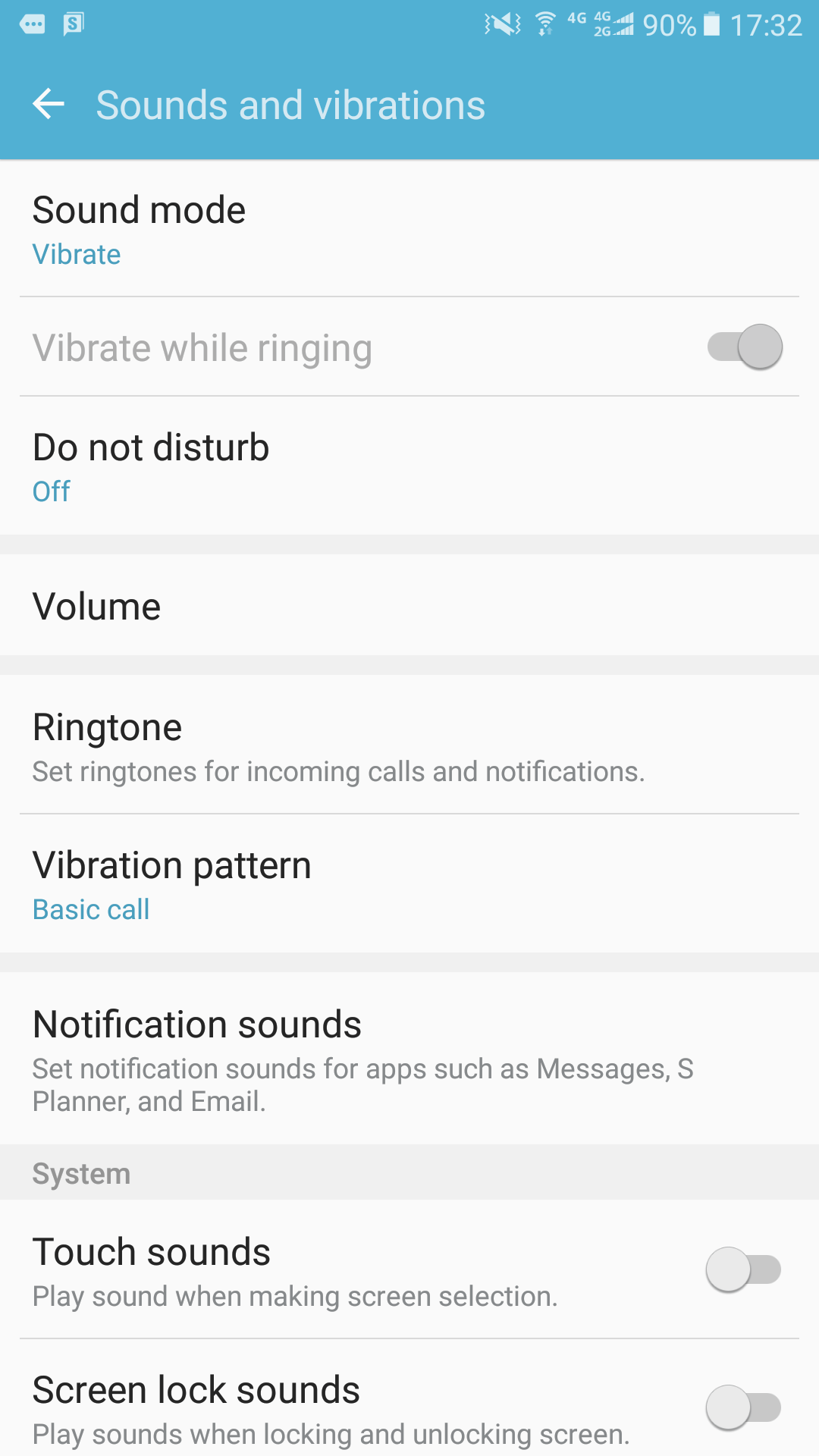
2. Choose your preferred ringtone (System Default ringtone).
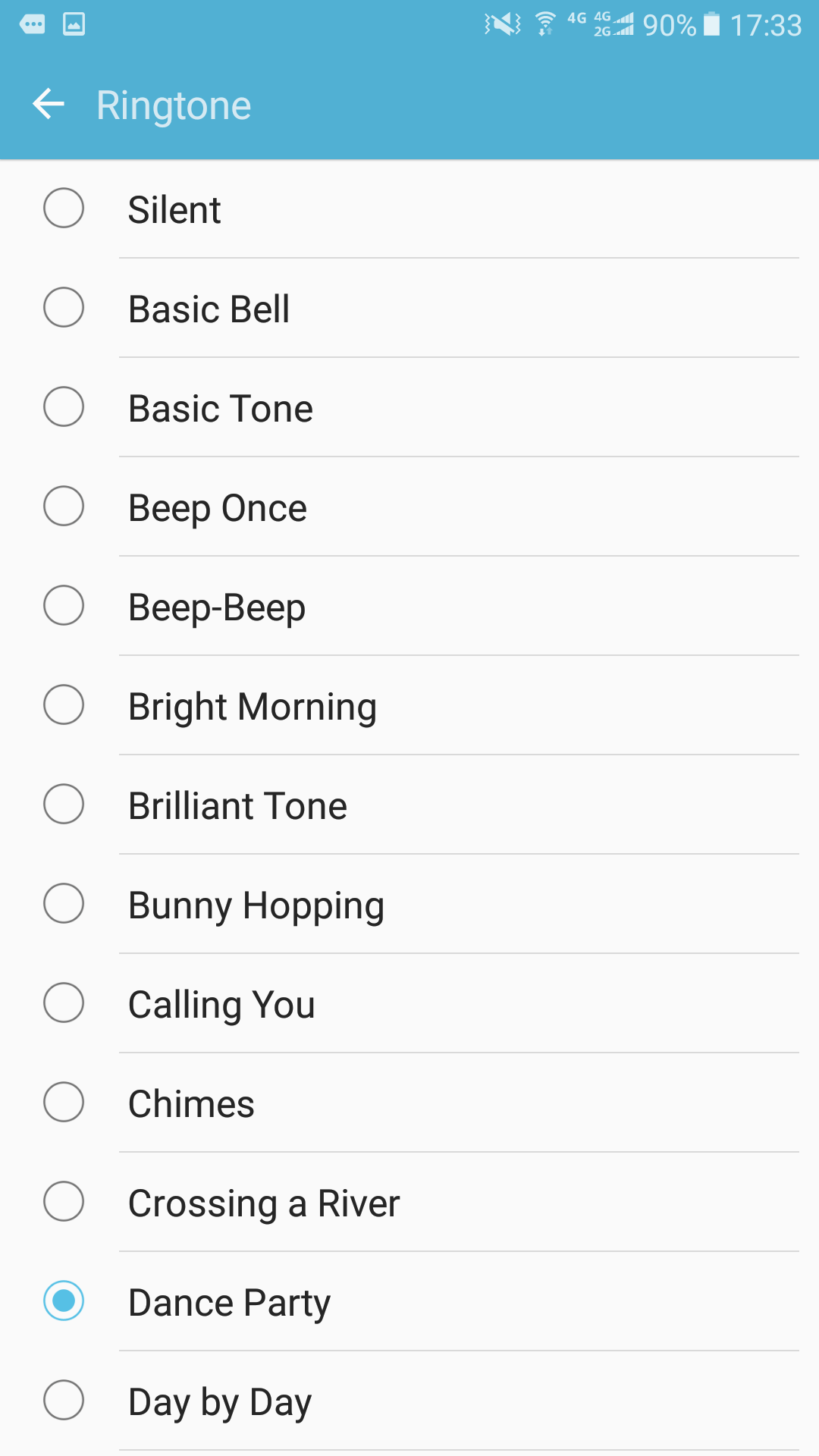
3. Or if you want to choose the custom ringtone, please drop the ringtone page and then click Add from device storage > choose your custom ringtone > tap Done.
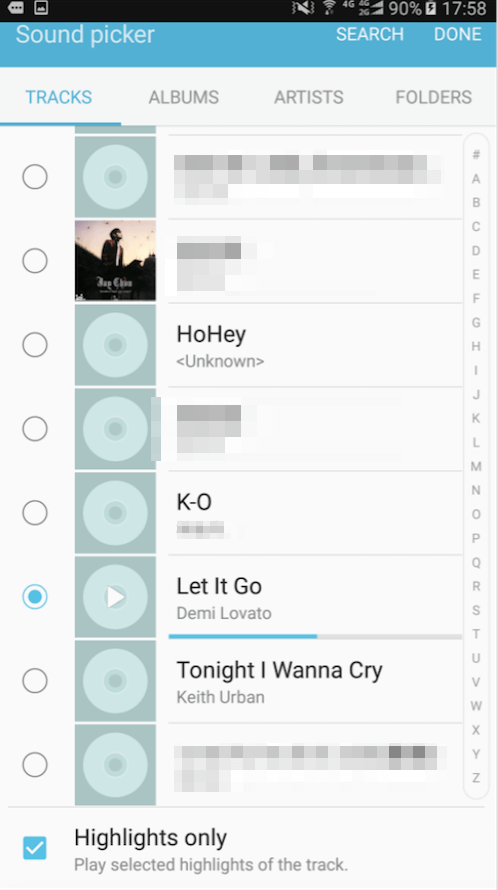
How to manage apps with folders on Android device?
When there are many apps on home screen of your Android device, it will be hard to find apps quickly. An easy way to organize all those apps is to create folders on your Android device. So this post will provide you with how to manage apps with folders on Android device. Here we take SAMSUNG for example:
1. Create a new folder. Drag and drop any two apps together, and then the new folder will Automatically generate. Here you can organize apps with folders in category.
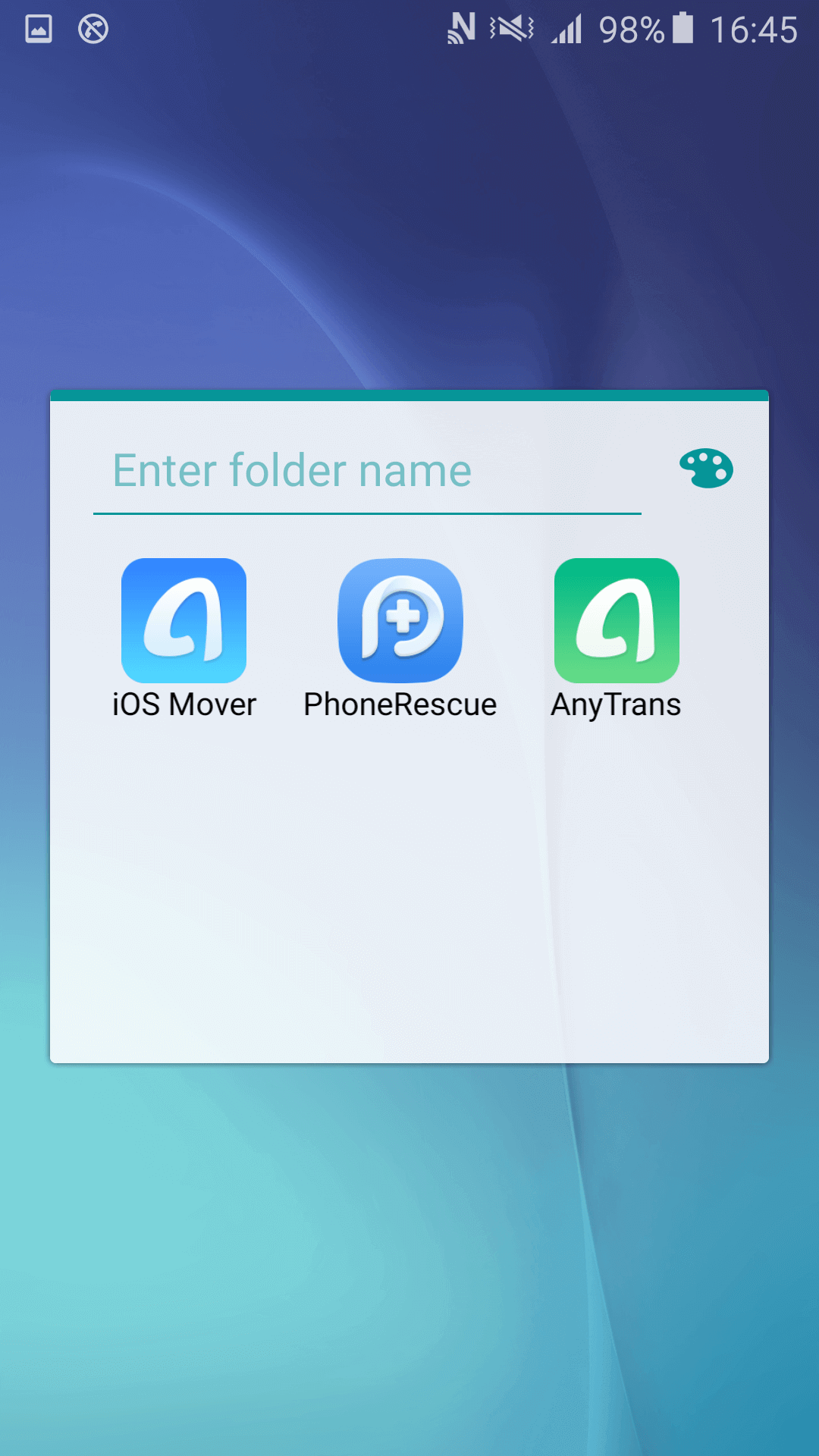
2. Name a folder. Tap the new created folder and input customized name.
How do I remove apps on Android device?
If you want to remove or uninstall apps of android device, there are two methods for you. Please refer to the following steps to do it:
Method One: Locate the app icon you wish to uninstall from the Home Screen of your android device > Tap and keep holding on the app icon until the Uninstall icon shows you > Tap the Uninstall icon to remove the app.
Method Two: Go to the Settings app > Tap Applications or Apps > Manage Applications and then select the app you wish to uninstall > Tap the Uninstall icon.
Why can't i install AnyTrans APK on my Android device?
While installing the Third Party Software APK on Android device, some device may require you to enter password to get verification(take OPPO device for an example). Here is the detailed instructions:
1. Please verify your identity by entering the password of your OPPO account. After that, please click Install option.
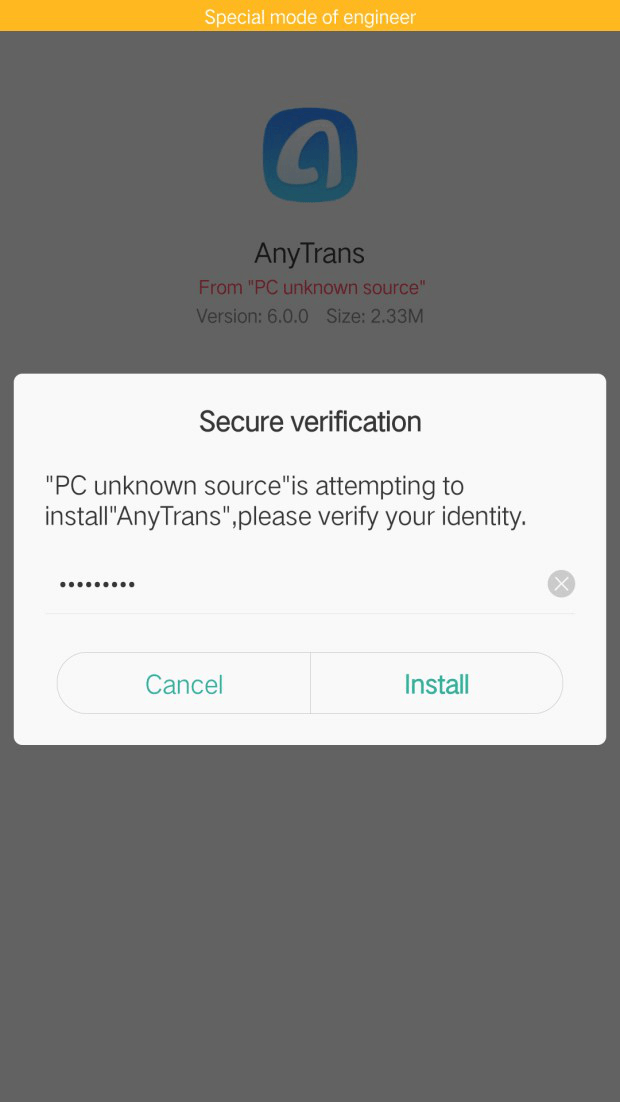
2. Then, you will see the below interface. Next, please click Install button.
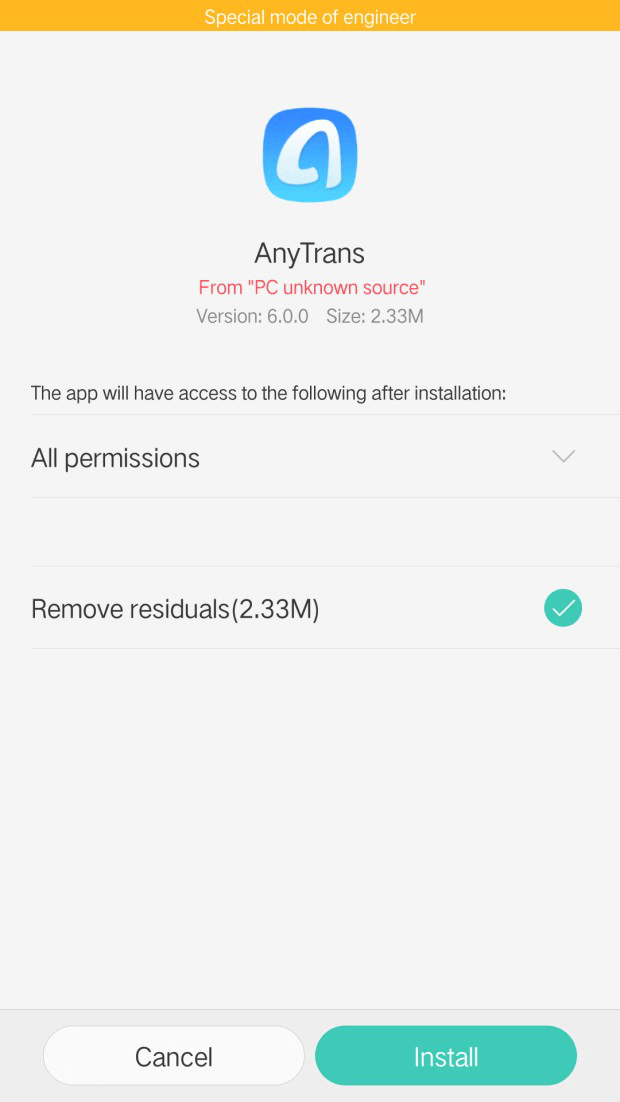
How to fix the clock when it keeps losing time on Android device?
Some people may encounter this issue that the clock keeps losing time on Android device. This can happen if your clock is set to automatically update the time from the network on Android device. If the network clock is slow, so will your phone be.
How to fix the clock when it keeps losing time on Android device? Hence, we prepare this page to help you solve the problem. Here we take HUAWEI for example.
Go to Settings of home screen > Tap System - Date & time > Uncheck the "Automatic Date & time" option box at the top > Set your time.
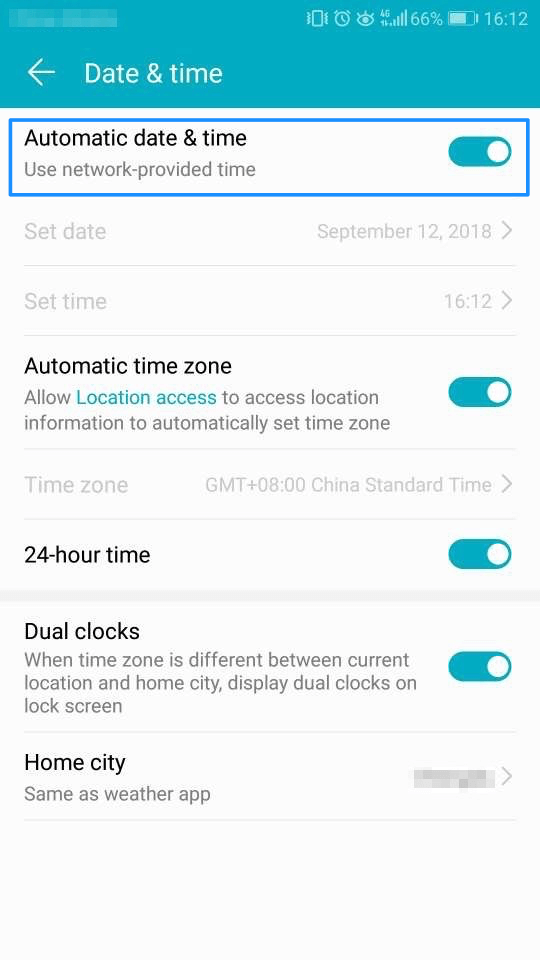
Then your clock should run perfectly on time with only manual adjustments needed occasionally.
What to do if the third party software fails to detect your portable device?
How to adjust the brightness in android device? Please refer to the detailed instructions to tackle this issue. Here we take HUAWEI for example.
Please go to the Settings of home screen > Tap Display > Drag the slider to the right or left to adjust the brightness.
If your android device has an ambient-light sensor, you’ll see an Automatic option besides the slider. Turning on Automatic can adjust brightness based on your surroundings automatically.
 -->
-->